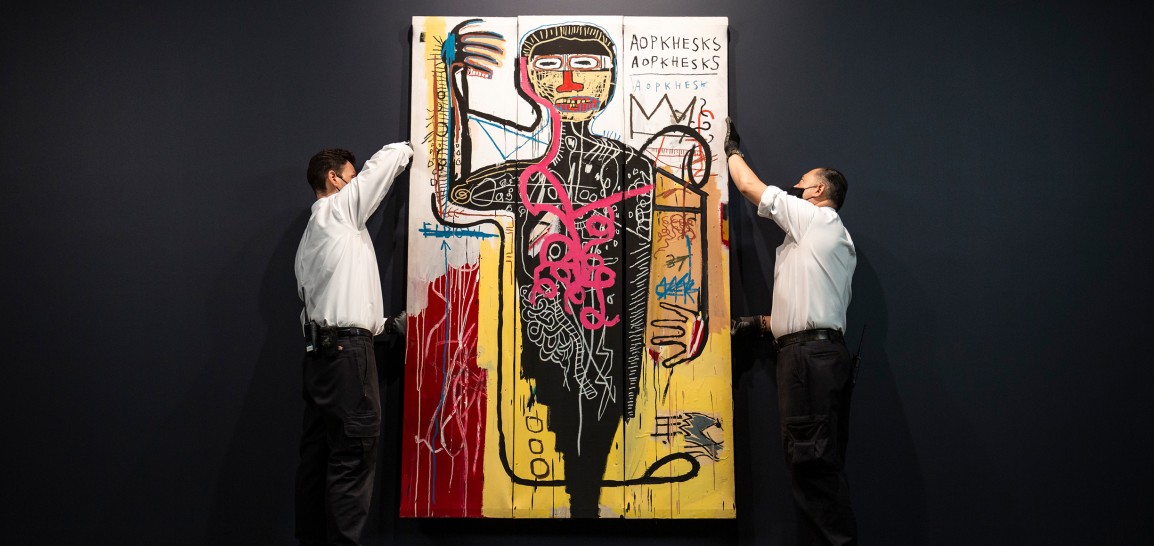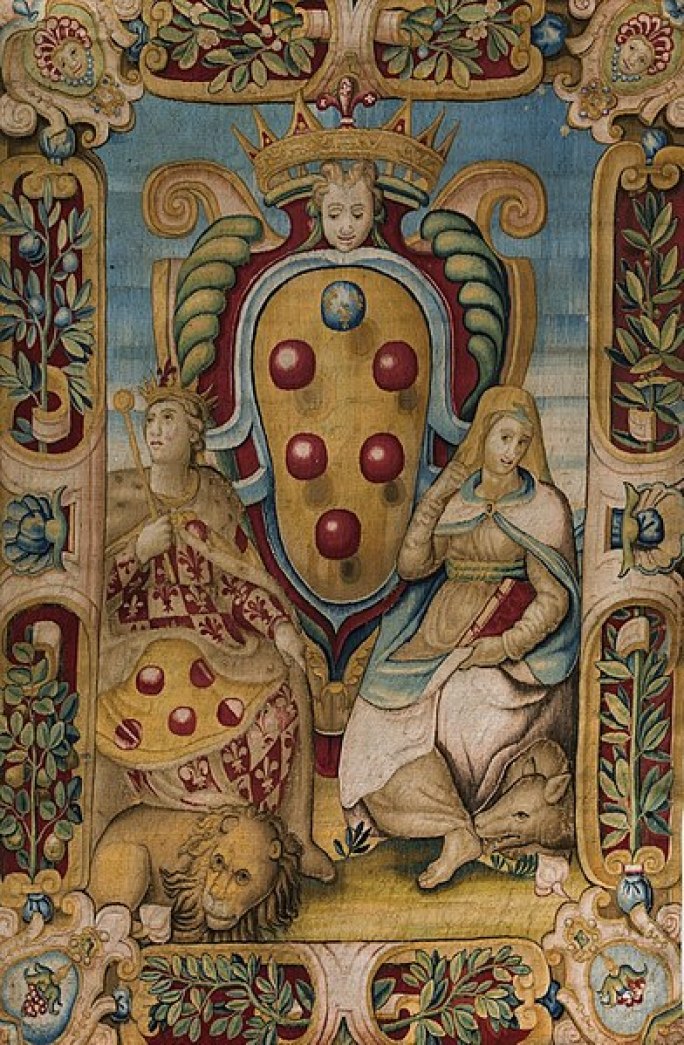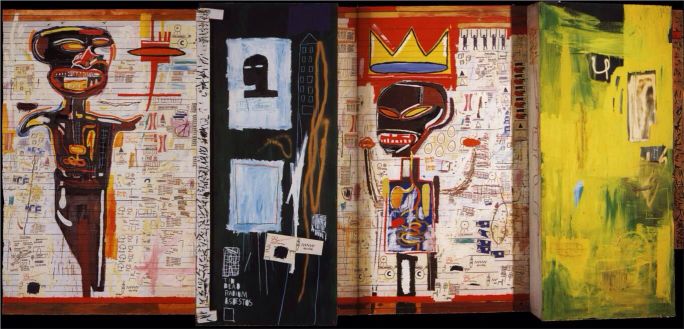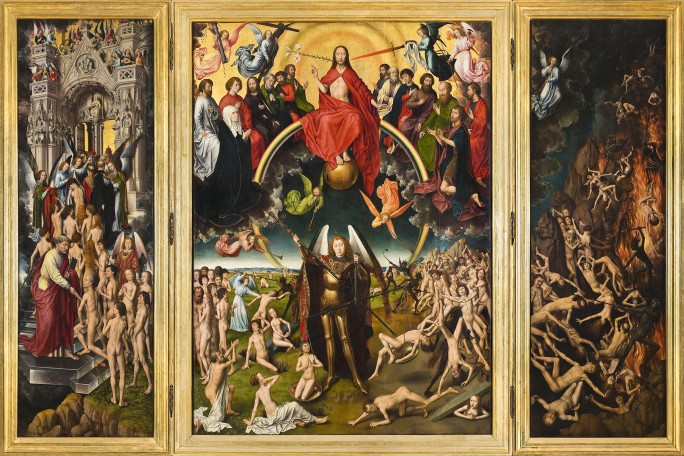Jean-Michel Basquiat’s 1982 Masterwork Versus Medici to Star in Sotheby’s Contemporary Art Evening Sale in May
NEW YORK, 25 March 2021 – As the hammer fell on the last lot of Sotheby’s cross-category sale in London today, Sotheby’s auctioneer Oliver Barker unveiled live Jean-Michel Basquiat’s Versus Medici, which will take center stage in Sotheby’s Contemporary Art Evening Auction in New York on 12 May, where it will be offered with an estimate of $35/50 million. An extraordinary work executed in 1982 when Basquiat was only 22 years old, and soon after his transformative early trip to Italy in 1981, Versus Medici is among Basquiat’s most forceful visual challenges to the Western art establishment, in which the young artist boldly crowns himself successor to the artistic legacy as established by the masters of the Italian Renaissance.

Having remained in the same distinguished private collection since 1990, the work was previously in the collection of Stephane Janssen who was an early champion of Basquiat and acquired it from Larry Gagosian on a visit to Basquiat’s studio in 1982. It will appear at auction for the first time this spring. Testifying to its significance within the artist’s oeuvre, Versus Medici has been featured in multiple major exhibitions of the artist’s work, including Intuition at the Palazzo Fortuny during the 2017 Venice Biennale, and most recently, Jean-Michel Basquiat: Made in Japan, the artist’s first comprehensive survey exhibition in Japan.

Completed in the same year as Basquiat’s Untitled, which sold at Sotheby’s in 2018 for a record-breaking $110.5 million, Versus Medici is another prime early masterwork by the artist. Featuring the artist’s signature visual language, Versus Medici confronts a key cornerstone of Western art history, the Italian Renaissance, a movement associated with achievement and enlightenment, as defined by the works of Leonardo, Michelangelo, Raphael, Botticelli, and others. Painted at the inception of Basquiat’s career, the artist ambitiously wages a reckoning with the history of art and not only asserts his own place within this history, but also crowns himself a successor to these Renaissance masters. Basquiat was well-versed across art history, and a range of influences can be seen throughout the work – namely the anatomical complexity of early Leonardo drawings and the triptych format of the painting’s construction. Executed on three joined canvases, even the structure of Versus Medici draws upon Basquiat’s extraordinary familiarity with centuries of tradition by echoing the time-honored format of the tripartite altarpiece, and references the religious and political power that were associated with them.

Grégoire Billault, Sotheby’s Head of the Contemporary Art in New York, commented: “After remaining in the same distinguished private collection for more than three decades, it is an honor to present Basquiat’s masterful Versus Medici at auction for the very first time. We are thrilled to once again bring one of the artist’s most singular and visionary works to auction this spring. Not only does the painting stand among the most powerful within his oeuvre, but it is also a radical repositioning of art history, epitomizing Basquiat’s enduring legacy as a true master and icon that firmly places him within the lineage of the Renaissance masters he confronts in this work. In Versus Medici, Basquiat’s melds the political and art historical as he consciously stages a reckoning with the Westernized ideal of visual culture, and was intent on mastering and commandeering the accepted ‘rules’ of art history in order to break them—as all great artists do.”
Versus Medici will be on view in Taipei (3 – 4 April), Hong Kong (16 – 20 April), and Los Angeles (24 – 26 April), before returning to New York for a pre-sale exhibition in advance of the May sale.
JEAN-MICHEL BASQUIAT’S VERSUS MEDICI
Painted in 1982, Versus Medici is one of the artist’s most assured early masterworks, completed in the same year as the record-breaking Untitled, and shortly after Basquiat’s breakthrough inclusions in the Times Square Show in 1980 and New York New Wave at PS1 in 1981. Building on this early success, Basquiat was invited by dealer Emilio Mazzoli in 1981 for his first solo exhibition in Modena, Italy, thus beginning his fascination with Renaissance Italy from his first-hand experience of the legacy of the Medici family’s legendary patronage. Famously an autodidact, Basquiat absorbed myriad artistic influences and histories during these frequent visits to Italy in his early career—he returned in 1982 for an exhibition at the Roman gallery Mario Diacono—which would greatly impact his visual lexicon and influence a number of important works. Among them are Florence, In Italian, and the grand history painting Toussaint L’Ouverture versus Savonarola, a work that narrates the insurrectionary efforts of two very different political figures, one the freed slave known as the ‘Father of Haiti’, the other a 15th century Italian Dominican friar who helped expel the ruling Medici family from Florence.

In Versus Medici, Basquiat takes command of the Western art narrative, and crowns himself, the son of immigrants from Haiti and Puerto Rico, as artistic royalty, taking on the old masters and positioning himself as the almighty successor to centuries of artistic genius. With great intensity and visual force, and acutely aware of the exclusion of artists based on race from institutional and critical consideration, Basquiat used his position at the periphery of the art establishment to forge a new and highly referential visual language. Having voraciously visited the Brooklyn Museum and the Metropolitan Museum of Art in New York, Basquiat recognized a glaring absence of Black representation within the art historical canon. In the present work, Basquiat positions himself as the heroic opponent to European history’s greatest dynasty of patronage and influence, confronting the canon they helped to shape by presenting his own potent masterwork. In its incendiary title, Versus Medici testifies to Basquiat’s ultimate aim of establishing a place for himself within the canon – and in doing so, he boldly declares his arrival as a brilliant, young artist into a new canon that would be forever transformed by his paintings.
Ever the iconographic alchemist, here Basquiat absorbs the legacy of Western art history and reshapes it to his own purposes. Through this painting, the Medici become a stand-in for the power systems of the art world at large, as figureheads within for a powerful system of art patronage that was echoed in the power structures of Basquiat’s own art world in 1980s New York. Recognizing that for centuries, every art historical movement was legitimized by systems of exclusion, Versus Medici presents a searing and heroic figure to oppose that narrative – while simultaneously aligning the young Basquiat as radical successor in the new pantheon of art history.
This powerful stance is eloquently captured in Basquiat’s use of the Greek term “Aopkehsks,” which could refer to the Hellenization of the Egyptian pharaoh Amenhotep, a prominent and idealized king, or to apotheosis, the elevation of the human to the realms of the divine. In either interpretation, Basquiat positions his ferocious figure as a vessel of divine will. Read alongside the symbol of the three-pointed crown – one of Basquiat’s defining and most recognizable motifs – there is little doubt the figure in the painting is depicted as an avenging hero of art history.



